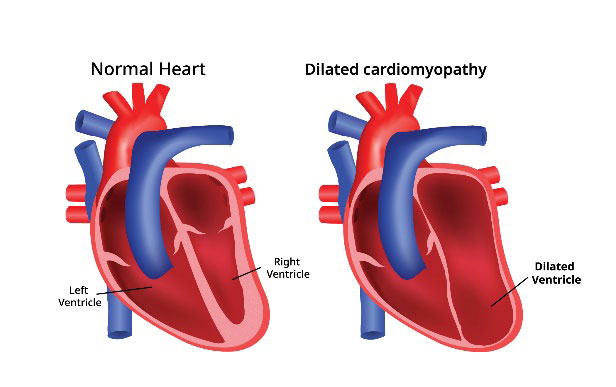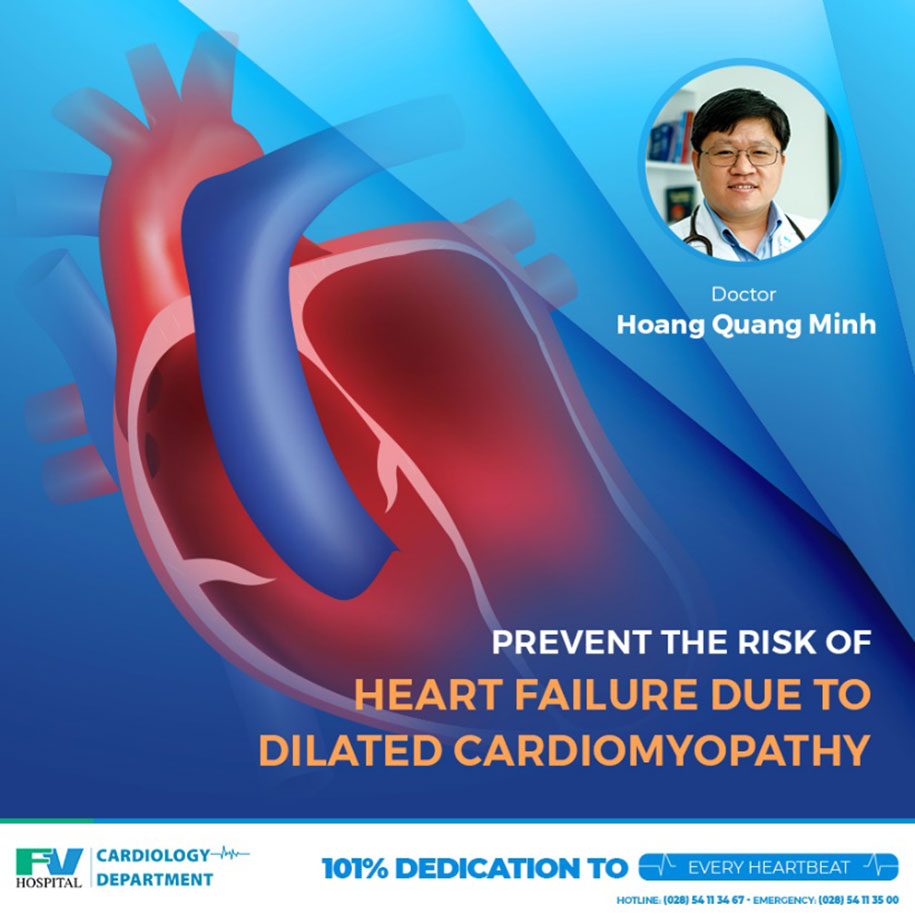Dilated cardiomyopathy is a disease which gradually weakens heart muscle over time, making the heart unable to pump blood throughout the body. Blood flow into the coronary arteries feeding the heart also decreases, causing heart failure.
Common symptoms of this disease are fatigue, difficulty breathing, and a reduced ability to cope with exercise stress. In addition, about 25 percent of patients with dilated cardiomyopathy have atypical chest pain. Depending on the degree of ventricular failure, patients might experience other symptoms, such as palpitations (a fast, pounding or fluttering heartbeat) and leg edema (swelling or puffiness of the tissue directly under the skin).
Dilated cardiomyopathy has many causes, including thyroid toxicity and effects from a viral or parasitic infection. Up to 35 percent of cases have a family history of dilated cardiomyopathy. Many other causal factors have yet to be identified.
This cardiovascular disease can easily lead to complications of heart failure and death if not treated promptly. Patients with any related symptoms should check with their medical provider at the earliest possibility. Many diagnostic methods, such as echocardiography, cardiac MRI, and electrocardiogram (ECG) can be used to diagnose this disease.

The main treatment for dilated cardiomyopathy is medication. For cases that do not respond well to medication, surgeons will install a cardiac resynchronization machine (CRT-D) in the patient’s chest to prevent sudden death.
A cardiac resynchronization therapy defibrillator (CRT-D) machine can also be installed. It can:
- Help detect and treat dangerous arrhythmias that can lead to cardiac arrest
- Stimulate a pacemaker to increase blood pumping efficiency
- Improve the patient’s symptoms of heart failure, shortness of breath and fatigue
- Reduce sudden cardiac death.
At FV Hospital, CRT-Ds are inserted by Dr Hoang Quang Minh, who has more than 10 years of experience in the treatment of cardiac arrhythmias, especially with electrophysiological methods to regulate the heart and heartbeat rhythm.
The procedure is performed in a modern Cathlab room, and takes three hours, on average, to complete. The patient is under local anaesthesia, rather than general anaesthesia, and can walk normally after the procedure. Patients are typically discharged within one or two days.

Dr Quang Minh says that, in addition to having a healthy diet and lifestyle, patients need to be examined if they experience symptoms like the ones detailed above. When the disease is detected early, treatment is highly effective and reduces the risk of other cardiovascular diseases and stroke so that patients can look forward to a fulfilling life.
To book an appointment with Dr Hoang Quang Minh, please contact: Cardiology Department, FV Hospital, Nguyen Luong Bang, Tan Phu Ward, District 7, Ho Chi Minh City
Hotline: (028) 5411 3467



